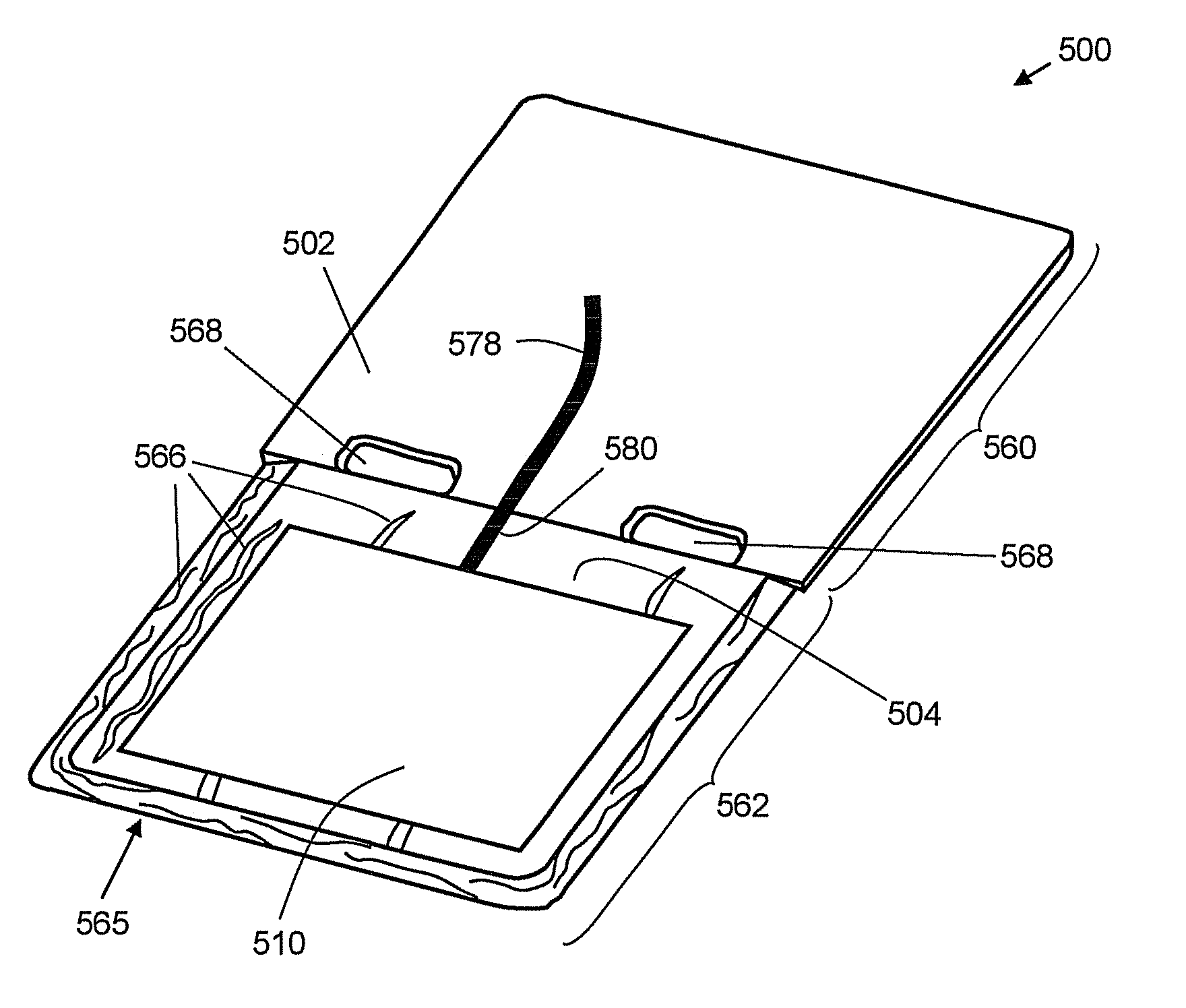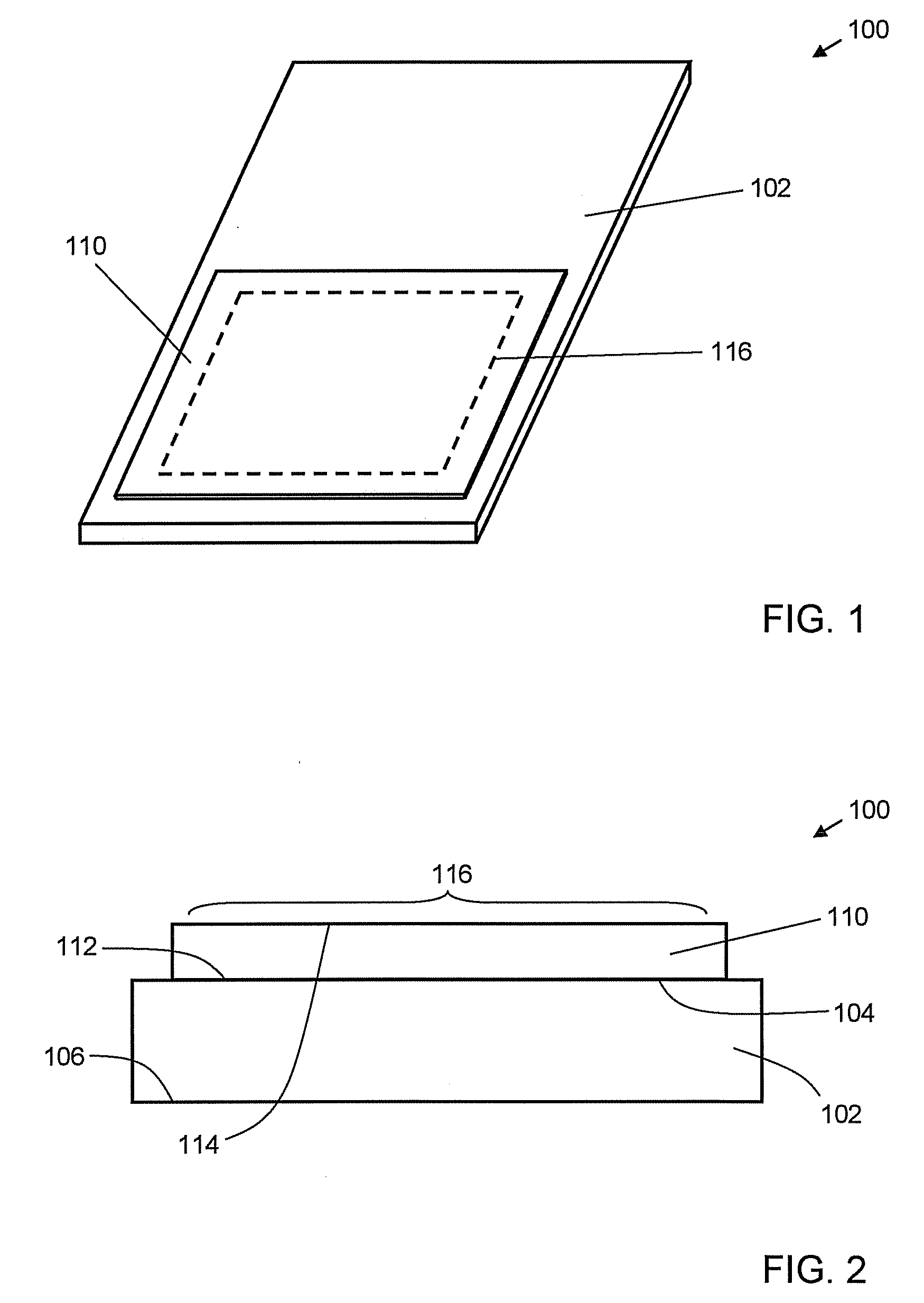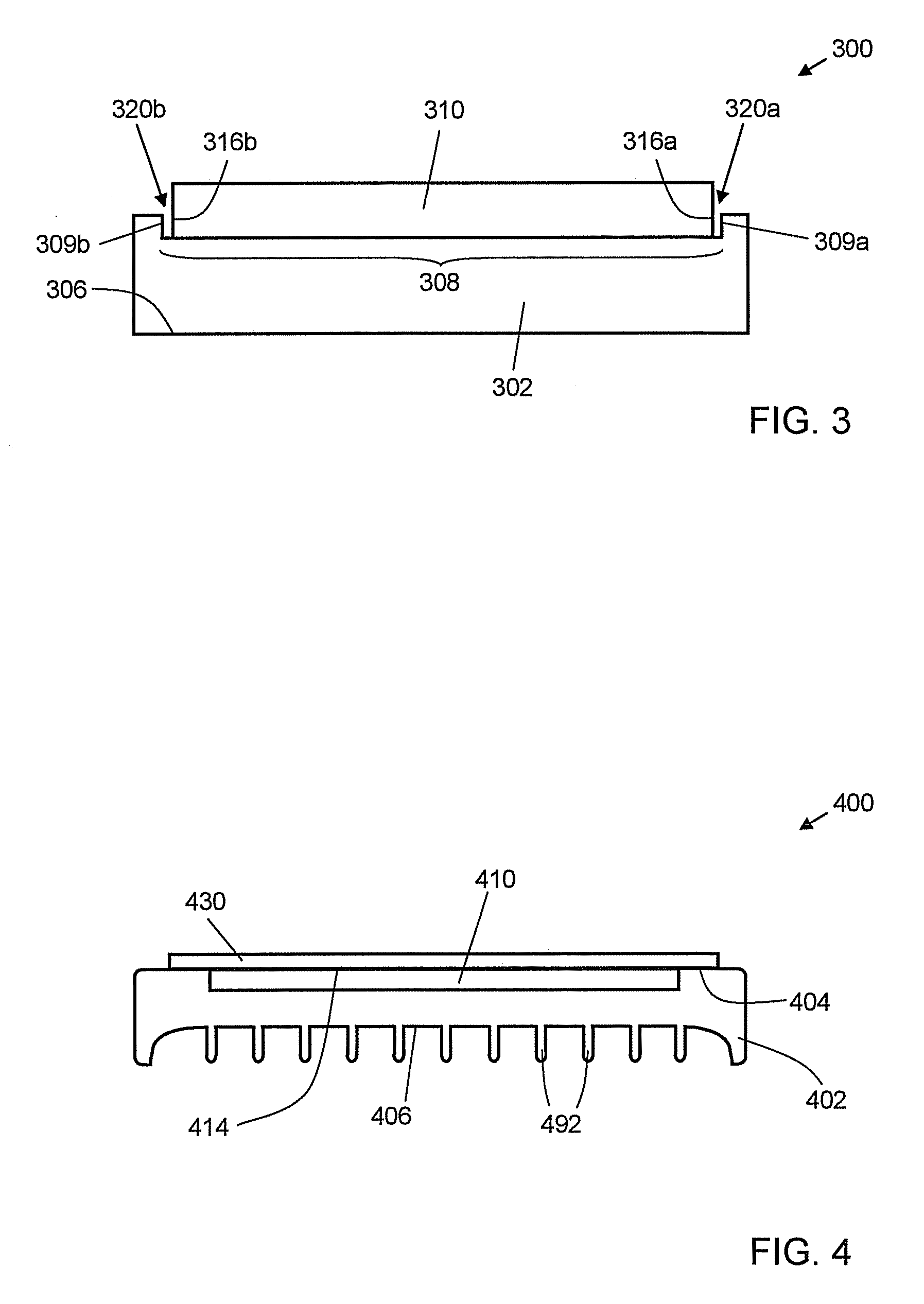Photovoltaic Roofing Tiles And Methods For Making Them
- Summary
- Abstract
- Description
- Claims
- Application Information
AI Technical Summary
Benefits of technology
Problems solved by technology
Method used
Image
Examples
example 1
[0252]A laminate photovoltaic element having the structure of FIG. 52 was made by vacuum lamination. The structure was constructed by placing an 4 mil ETFE top film (available from Saint-Gobain Corp., Wayne, N.J.) with a cementable side facing the photovoltaic element, a 18 mil EVA encapsulant (available from STR Corp., Enfield, Conn.), a photovoltaic cell (T-Cell available from Uni-Solar, Auburn Hills, Mich.), another film of EVA encapsulant, and a 10 mil tie layer of extruded blend of PP (Basell KS021P) and EVA (Bynel E418 from DuPont Corp). The T-Cell had lateral dimensions of roughly 7.5″×4.75″, and the other laminate sheets had lateral dimensions of roughly 9″×6.25″. Vacuum lamination was performed in model SPI-480 vacuum laminator from Spire Corp. at temperature of 155° C., to form a laminate structure that extended roughly 0.75″ on each side of the T-Cell. The laminate structure was placed on the top surface of a polypropylene polymeric tile preform just prior to the compress...
example 2
[0253]A polymeric carrier tile can be compression molded with an indentation formed in its top surface. For example, a thin (e.g., ˜⅛″) sheet of silicone rubber can be cut to dimensions slightly larger than those of the photovoltaic element (e.g., a laminate having an adhesive bottom later, e.g., as described above in Example 1). The silicon rubber sheet can be placed on the polymeric tile preform, and compression molded into its top surface to form the polymeric carrier tile. The silicone rubber sheet can be removed to leave an indentation sized slightly larger than the photovoltaic element. The photovoltaic element can be placed in the indentation, for example as shown in FIG. 54, and in the left half of FIG. 55. The assembly so formed can be placed on a carrier as described above with respect to International Patent Application no. PCT / US07 / 85900, then put into an oven hot enough to activate the adhesive. A release film (e.g., ETFE) can be placed over the assembly on the carrier,...
PUM
| Property | Measurement | Unit |
|---|---|---|
| Length | aaaaa | aaaaa |
| Length | aaaaa | aaaaa |
| Length | aaaaa | aaaaa |
Abstract
Description
Claims
Application Information
 Login to View More
Login to View More - R&D
- Intellectual Property
- Life Sciences
- Materials
- Tech Scout
- Unparalleled Data Quality
- Higher Quality Content
- 60% Fewer Hallucinations
Browse by: Latest US Patents, China's latest patents, Technical Efficacy Thesaurus, Application Domain, Technology Topic, Popular Technical Reports.
© 2025 PatSnap. All rights reserved.Legal|Privacy policy|Modern Slavery Act Transparency Statement|Sitemap|About US| Contact US: help@patsnap.com



